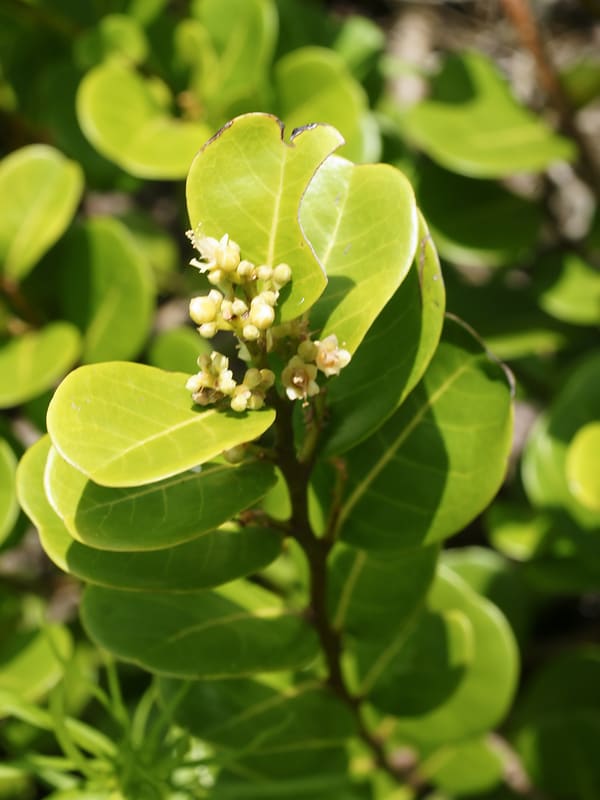Cocoplum, Paradise Plum, Icaco Plum, Plumcot, Hog Plum
Chrysobalanus icaco

🌿 Morphology
🌞 Growing conditions
🌍 Origin and family
🌾 Uses
Warning: Despite the care taken in writing this sheet, it is essential to cross-reference sources before using or consuming any plant. When in doubt, consult a qualified professional
Permaculture uses
Cocoplum fruit is edible, often used for jams, jellies, and preserves. The seeds are also edible after roasting, tasting like almonds. It's a hardy, salt-tolerant shrub or small tree, suitable for coastal erosion control and windbreaks. It attracts pollinators and provides habitat for wildlife. Some cultivars are selected for larger fruit size or ornamental foliage, enhancing its garden utility.
Permapeople description
Coco Plum is a shrub or small tree native to tropical and subtropical coastal areas of the Americas and Africa. It produces small, edible fruits that are often used in jams and jellies.
Botanical description
Chrysobalanus icaco is a shrub or small tree in the family Chrysobalanaceae, typically growing to 1–3 meters (3–10 feet) but can reach up to 6 meters (20 feet) in optimal conditions. It has smooth, oval to rounded leaves that are leathery and typically 3–10 cm (1–4 inches) long. Young leaves often have a reddish or bronze hue, maturing to green. The flowers are small, white, and inconspicuous, borne in clusters. The fruit is a drupe, varying in color from white to pink to dark purple, and contains a single seed. The bark is smooth and gray-brown. It is a highly adaptable species, tolerating a wide range of soil types, including sandy and saline soils. It's native to tropical America and Africa.
Companion planting
Cocoplum is generally compatible with other salt-tolerant coastal plants. As a native species, it integrates well with native plant communities. Avoid planting near plants sensitive to saline soils or those that would be overly shaded by the Cocoplum's growth.
Propagation methods
Cocoplum can be propagated by seeds, cuttings, or layering. Seed propagation requires scarification to improve germination rates. Cuttings, especially semi-hardwood cuttings, root readily. Layering is also an effective method for propagating new plants.
History and traditions
Traditionally, Cocoplum has been used by indigenous populations in the Caribbean and Florida for food and medicinal purposes. The fruit was a staple food source, and the leaves and bark were used in traditional medicine to treat various ailments. In some cultures, the plant is associated with folklore and spiritual beliefs.
Usage calendar
Flowering typically occurs in spring and summer. Fruit ripens from summer to fall. Planting is best done in spring or early summer. Pruning can be done in late winter or early spring to shape the plant and remove dead or damaged branches. Harvesting occurs when fruits are ripe and easily detached from the plant, from summer to fall.
